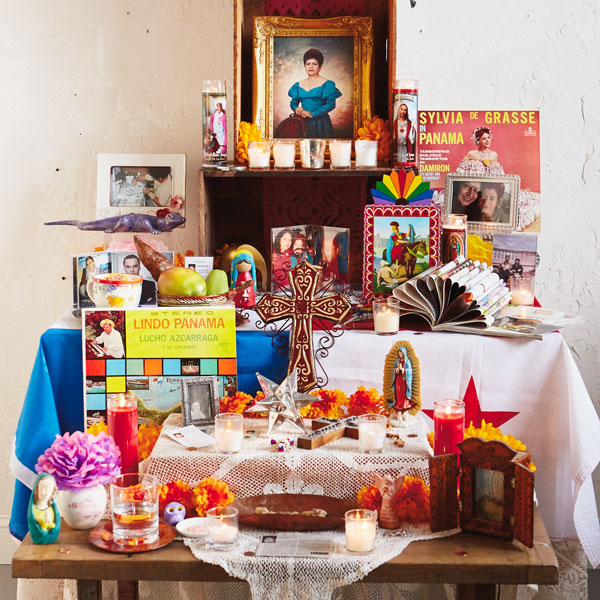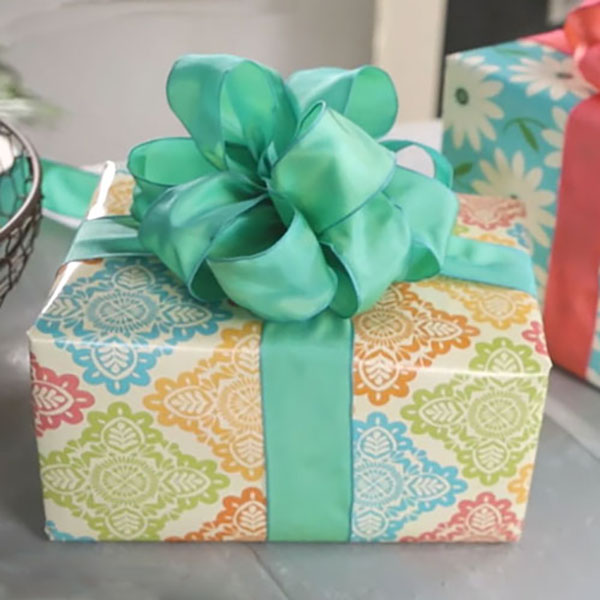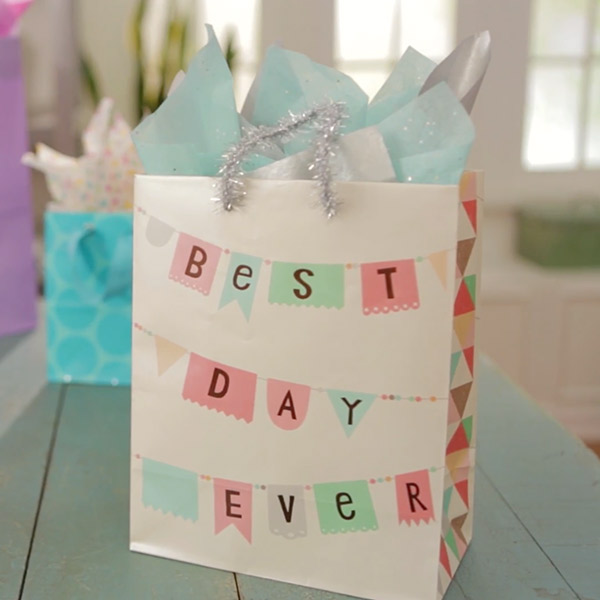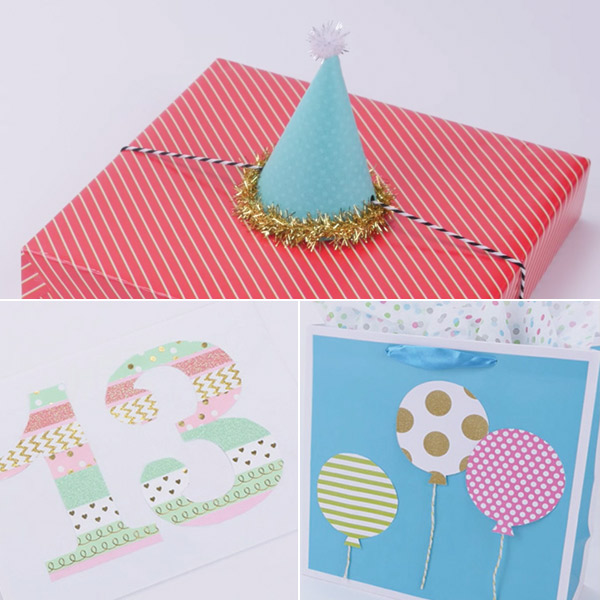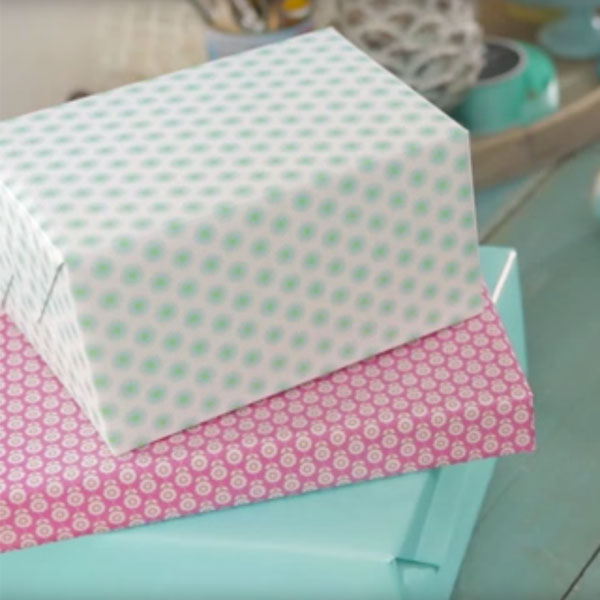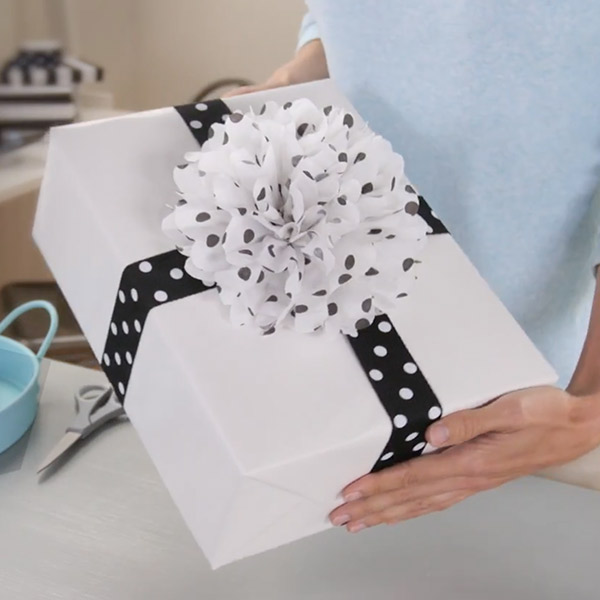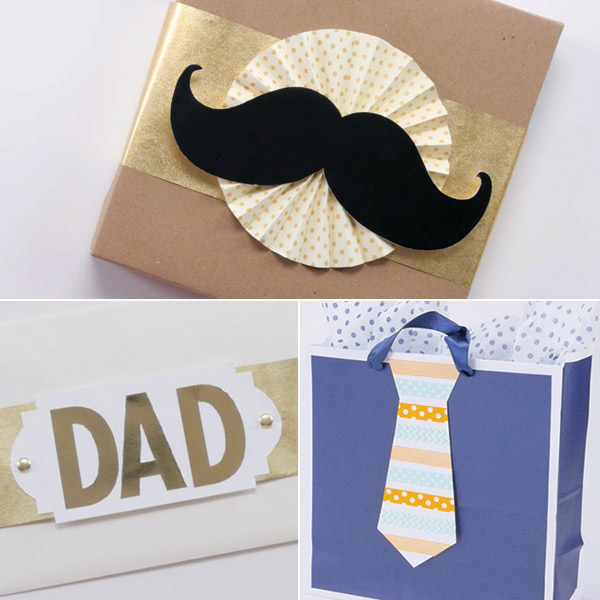How to Address an Envelope
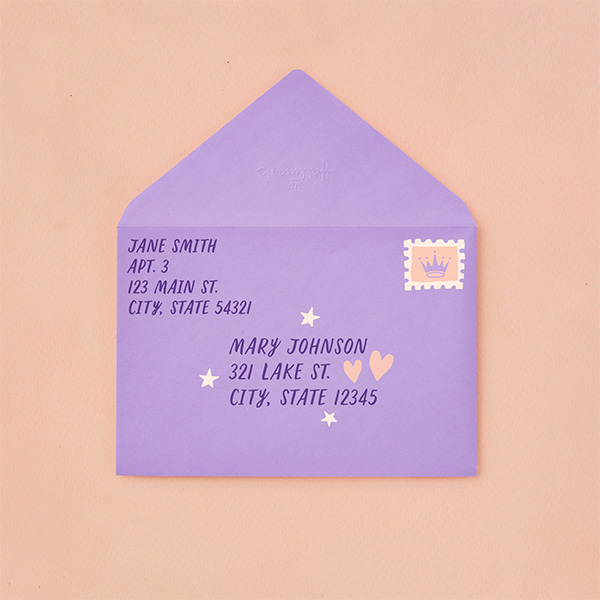
Not long ago, dropping a note in the mail was part of everyday life. Now we communicate instantly with texts, emails, and social media—but when you want to send a tangible, lasting, meaningful message, there’s nothing like a card. Here’s how to address an envelope and send your card out into the world.
Inspired? Create and share by tagging @HallmarkStores.
How to address the envelope
It’s important to get the addresses in the right spots, or you risk your mail landing on your own doorstep instead of the intended recipient’s.
Add Your Return Address
Write your own address (the “return address”) on the top left corner of the front of the envelope. It’s also acceptable to put it on the back of the envelope in the middle of the flap.
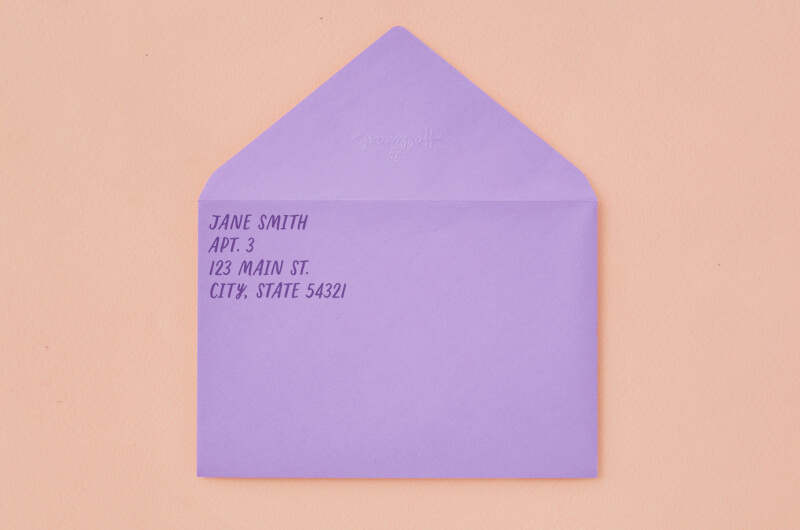
Line 1: Your full name (and title, if appropriate)
Line 2: Business name, building name (if a college dorm, for instance), apartment or suite number, if applicable
Line 3: Street address
Line 4: City State Zip Code
The return address is there in case your mail has the wrong amount of postage or the recipient’s address is inaccurate. The card will be returned to you to fix and resend.
Add the Mailing Address
Next, write the recipient’s name and address in the center of the front of the envelope.

Line 1: Recipient’s full name (and title, if appropriate)
Line 2: Business name, building name (if a college dorm, for instance), apartment or suite number, if applicable
Line 3: Street address
Line 4: City State Zip Code
Bonus points
If you want to make things easy on the Post Office:
• Print neatly in all capital letters.
• Don’t use commas or periods.
• Use the Zip Code™.
• Leave about a half-inch of blank space across the bottom, because the post office will put a bar code there.
But also…
We’re big fans of mail art. Just make sure the address is legible and the stamps are visible. And know it will confuse the scanners and computers, so your card may take a teeny bit longer to arrive at its destination.
Pro tip: If your mail is going outside of the country, follow the format of that country’s addresses and include your own country under the standard return address.
How to find a mailing address
Did you get to that last step and go “Oh, right…the address. That’s a thing I need”? If the contact list on your phone doesn’t include addresses, you’re not alone.
Here are the easiest ways to get a mailing address:
- Ask the person you’re sending the card to. Unless you want it to be a surprise, then…
- Check the map app on your phone. If you’ve ever driven to their house, you might have it there.
- If it’s a family member, ask your mom. If it’s a pal, ask your most organized mutual friend. If it’s a co-worker, ask your administrative assistant.
- Try searching their first and last name with their city and state and the word “address.”
How to mail a card
Add the Stamp
The stamp goes in the upper right corner of the front of your envelope.
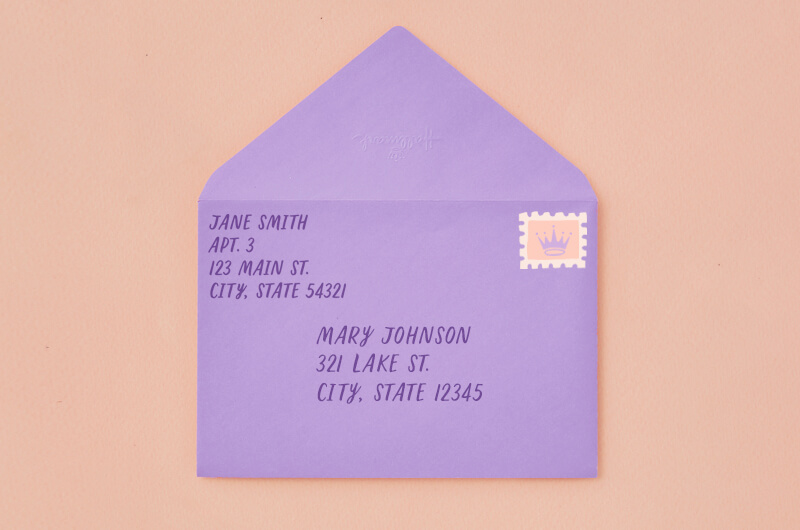
The stamp you’ll need depends on a few things:
- Where you’re sending your card
- The size and shape of the envelope
- How fast you want your mail to arrive
For most domestic (meaning U.S. only) deliveries with a standard-size envelope, you can use a Forever® stamp (currently 55 cents) and the mail will arrive in 1-3 business days. (Forever stamps have the benefit of holding their value no matter how long you have them, even if postage rates change.)
Non-standard-size envelopes—square, oversized, or unusual envelopes—start at about 70 cents. Really big, funky, bulky, or complicated envelopes—or letters going to other countries—will cost more. And then there are all sorts of options—next day delivery, certified mail, etc.
The US Postal Service is your best source for information about postage, including where to buy stamps.
Fun fact: You can mail just about anything—like a shoe, a coconut, or a rubber ball—with enough postage. Just consult with your local Post Office for the best way to get it to your destination.
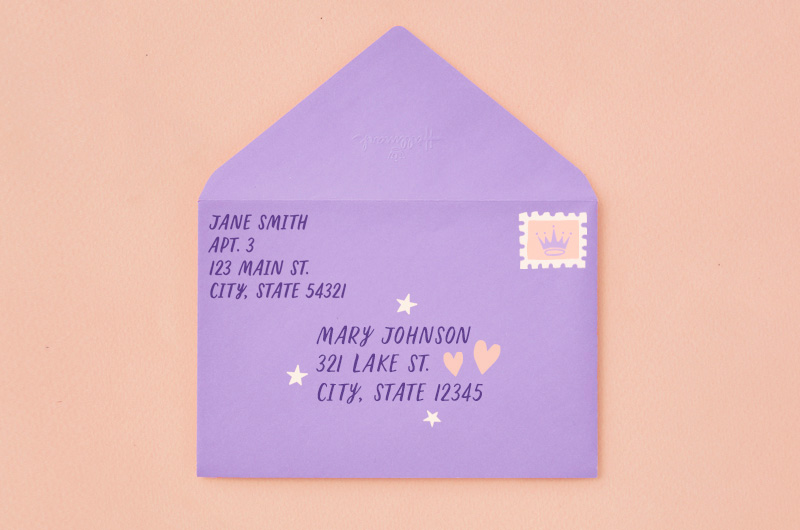
Mail the Card
Mailing your card is the easiest part: Simply leave it in your mailbox for your mail carrier to pick up. If you’re worried about speed or security, you can also drop it off at your local Post Office or into any blue USPS box. Find your nearest location.
Shop Cards
See allYou may also like
See more-
Gift Wrapping Giftology: how to wrap a Mother's Day gift
Make Mom’s day with these simply stunning Mother’s Day gift-wrapping ideas. Watch our video tutorials ...
-
Fall How to make a Day of the Dead altar: A personal story
Understand the traditions of Day of the Dead through one Hallmarker's story
-
Gift Wrapping Giftology: how to make a bow out of ribbon
Adding a bow on top is the classic finishing touch to any gift. Watch the fun gift-wrapping video tutorials below ...
-
Gift Wrapping Giftology: how to put tissue paper in a gift bag
Gift bag + tissue paper = a quick gift-wrap solution. Sure, it’s easy enough, but there are a couple of tricks to ...
-
Gift Wrapping Giftology: how to make a gift tower
Want a present that will stand out on any gift table? Watch our fun gift-wrapping video tutorial below to see just...
-
Gift Wrapping Giftology: how to wrap a birthday gift
Giving the best-wrapped birthday gift at the party is a piece of cake. Just watch our 3 gift-wrapping video tutori...
-
Gift Wrapping Giftology: how to wrap a present
Want to wrap a gift and have it look not just OK, but flawless? It’s easy. From wrapping a simple box to simply st...
-
Gift Wrapping Giftology: how to make tissue paper flowers
Who doesn’t like to get flowers? A tissue paper flower can brighten any gift. All you need is five pieces of tissu...
-
Gift Wrapping Giftology: how to wrap a graduation gift
Cap off your graduation gifts with a little creativity. Watch our video tutorials to find simple gift-wrapping tri...
-
Christmas Bake up Christmas cheer with a homemade gingerbread house
Whisk off to a snow-covered chalet this holiday season with a homemade gingerbread house fresh from your oven. Car...
-
Wedding How to write wedding vows that wow
Wedding vows can be particularly meaningful when you write them yourself, but sometimes it’s hard to know where to...
-
Thank You How to write a thank-you note
Since the dawn of time, people have struggled with the right way to say thank ...
-
Gift Wrapping Giftology: how to wrap a Father's Day gift
This Father’s Day, surprise him by making his gift a true presentation. Watch our gift-wrapping video tutorials fo...


